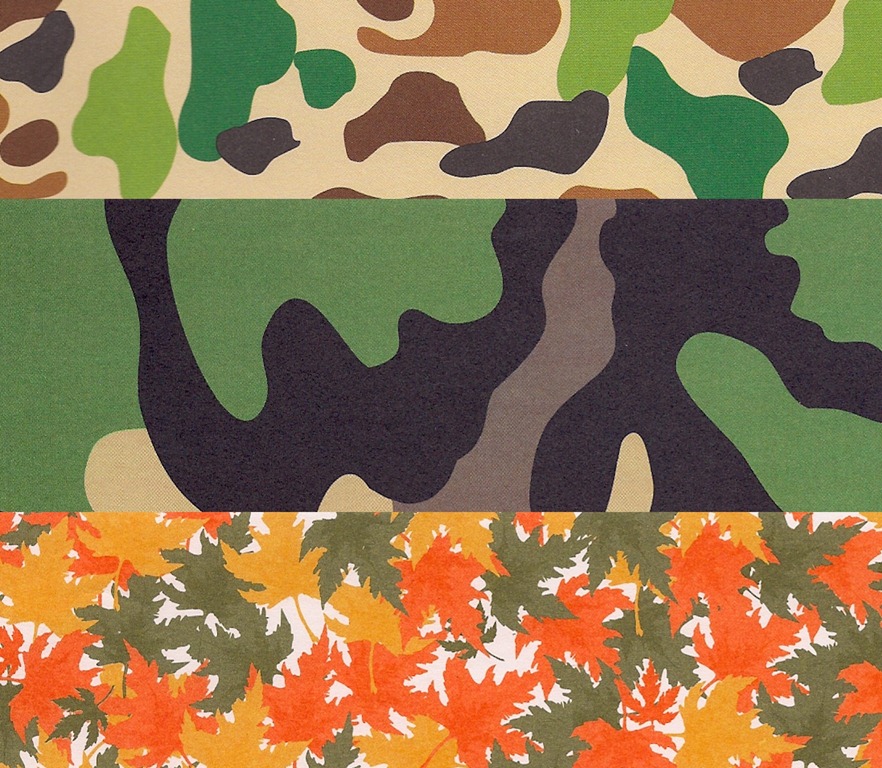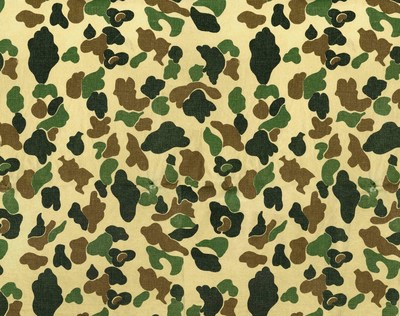

The three color patterns are sometimes called NATO camo or CARC camo, the latter for the paint used, although CARC was also used for four color painting. TM 43-0139 Painting Instructions for Army Materiel (Oct 1988 with Changes 1-3).TB 43-0209 Color, Marking, and Camouflage Painting of Military Vehicles, Construction Equipment, and Materials Handling Equipment.
Camouflage pattern manuals#
The camouflage manuals were updated in 19 to reflect the new standard: The four color patterns are sometimes called MERDC patterns, named for the Mobility Equipment Research and Design Command that designed them.ĭuring the 1980s the NATO countries, including the United States, agreed on a new camouflage scheme for vehicles, one with three colors (HMMWV photo, above). The linked page provides patterns for some of the most popular vehicles.
Camouflage pattern manual#
The manual TB 43-0209 Color, Marking, and Camouflage Painting of Military Vehicles, Construction Equipment and Materials Handling Equipment (October 1976) contained patterns for all vehicles in military inventory at that time. Army publication TC 5-200: Training Circular, Camouflage Pattern Painting (August 1975), details on the linked page. This type of pattern painting is described in U.S. When camouflage for general use on vehicles was introduced in 1975, the patterns called for four colors. ( 7.62mm M60 machine gun mounted on the HMMWV) 3 Color Camouflageġ27th Security Forces Squadron personnel with an M1043 HMMWV in 3-color camo at Selfridge Air National Guard Base, MI, 6 February 2002.

This is called countershading.įigures 38 to 40 of FM 5-20B were color plates showing vehicles painted olive drab with black (for temperate zones and jungle), olive drab with earth red (for desert terrain), and olive drab with white (for snow and trees). White or light gray paint is applied to the undersurfaces of vehicles to cause them to reflect light, thus lightening the dark shadows of the undercarriage. The light color is selected to match a light color typical of and predominant in the terrain in which the vehicle operates. Vehicles were selectively camouflaged with paint in World War II, according to FM 5-20B (April 1944) "Camouflage of Vehicles" which called for patterns composed of a light color and a dark color:īlack or olive drab have proved satisfactory dark colors in several theaters of operations. The color specification for olive drab went through a number of changes over the years, explained in detail on the linked page. Several different shades of olive drab were used officially while un-officially vehicles were painted in local shops with whatever was available. vehicles were typically painted olive drab with blue drab or white markings. Camouflaged M3 halftracks in a parade, 34th Division, Rabat, Morocco, 4 July 1943.ĭuring World War II and after, until camouflage came into general use in 1975, U.S.


 0 kommentar(er)
0 kommentar(er)
